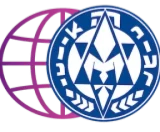By: Nicole Steizel, Rosh Chinuch Tnua Israel Hatzeirá b’Argentina
When speaking about Yom HaShoah, we always consider it to be the most terrible event
that the Jewish people have experienced—one of the worst catastrophes that humanity
has suffered. I believe that every person who is reading this article considers it to be that
way. I also consider it to be that way. My chest aches; I am breathless; I feel anguish, pain.
My eyes fill with tears; I have many questions that will never be answered. I feel anger
and many other emotions that are hard to put into words.
But I was once taught that even if you don’t have anything, even if the world looks gray,
even if you feel that you have lost everything, even if you don’t have any hope in the
depth of your heart, even if you don’t know where to go, there is always something that
will illuminate your way a little—something that gives your life a little more color, some
memory that brings a bit more hope. Today I choose to search for a bit of brightness in
that gray memory for the Jewish people and use it to recover something so important to
me, and I believe to many of you as well.
Did you know that the tnuot noar’s activities began with the rise of anti-Semitism, prior
to the outbreak of the War? At that time in Europe, youth began opposing the concept of
abrupt adulthood—the sudden passage from childhood to adulthood. Did you know that
the concept “youth” emerged at this moment in history? The first movement was
Wandervogel (migratory bird), to which all young people could join, no matter their
religion. This movement brought new Jugendkultur (juvenile culture) that was based on
the rejection of the adult world and the characteristics of city life. But with the rise of
anti-Semitism and the spread of baseless hatred against Jews, the doors to the movement
were closed to Jews. Did you know that the Wandervogel had accepted a large number of
Jews and, after an anti-Semitic turn, ended up joining the Hitler youth in 1933?
Driven by the rejection of the local youth movements, young Jews created their own
movements. In 1912 in Germany, the first “tnua” in history was founded—BlauWeiss
(blue and white). Did you know that the BlauWeiss had adopted the Zionist platform just
seven years after its creation? And that the range of Zionist platforms was very broad?
The courage, bravery and heroism of the young creators and participants of the first tnuot
noar must serve as a driving force and as motivation for the tnuot noar of the twenty-first
century. The way the people who fought acted—working and planning different rebellion
strategies during the day, and during the night, conducting clandestine classes for many
boys and girls in very small rooms—shows that the tnuot considered, even from the
moment of their creation, that keeping the flame of education alive was the most
important thing.
Did you know almost all the uprisings that that took place in the ghetto were directed and
coordinated by young members of tnuot noar?
The tnuot of that time played a fundamental role—they were one of the greatest forces of
resistance, greater than any other Jewish institution of the time. They strongly opposed
the Nazi government. They fought in different ways from adults. Some did so by
preserving their identity in the ghettos, and others by organizing rebellions. Some women
filled the roles of messengers, confronting the enemy face-to-face daily, and others
created and distributed a clandestine newspaper so that all were informed about what was
happening.
Along with these, there were many other forms of resistance, and many that we probably
do not know.
Currently, the tnuot noar are faced with different situations and conflicts, which we find
difficult to solve. Every tnua has its problems; they differ by location. Often with these
types of conflicts, we only see the negative side, or solutions we believe are impossible to
carry out. I am not making a comparison between these two different realities. I
understand that they are incomparable, and I think we all see it that way; that is the way
it should be. Instead, I come with the aim of taking that conviction to move forward with
which the tnuot rose at that time. I am seeking inspiration and motivation for acting,
without hesitation, in the way of those brave young people. I aim to use the example of
the tnuot of that time—their strength; their courage; their way of thinking, acting and
organizing.
We must understand that we are strong. We have the ability and the motivation to do
everything we want, as impossible it may seem. Because, after all, the only impossible
thing is what we do not try.










